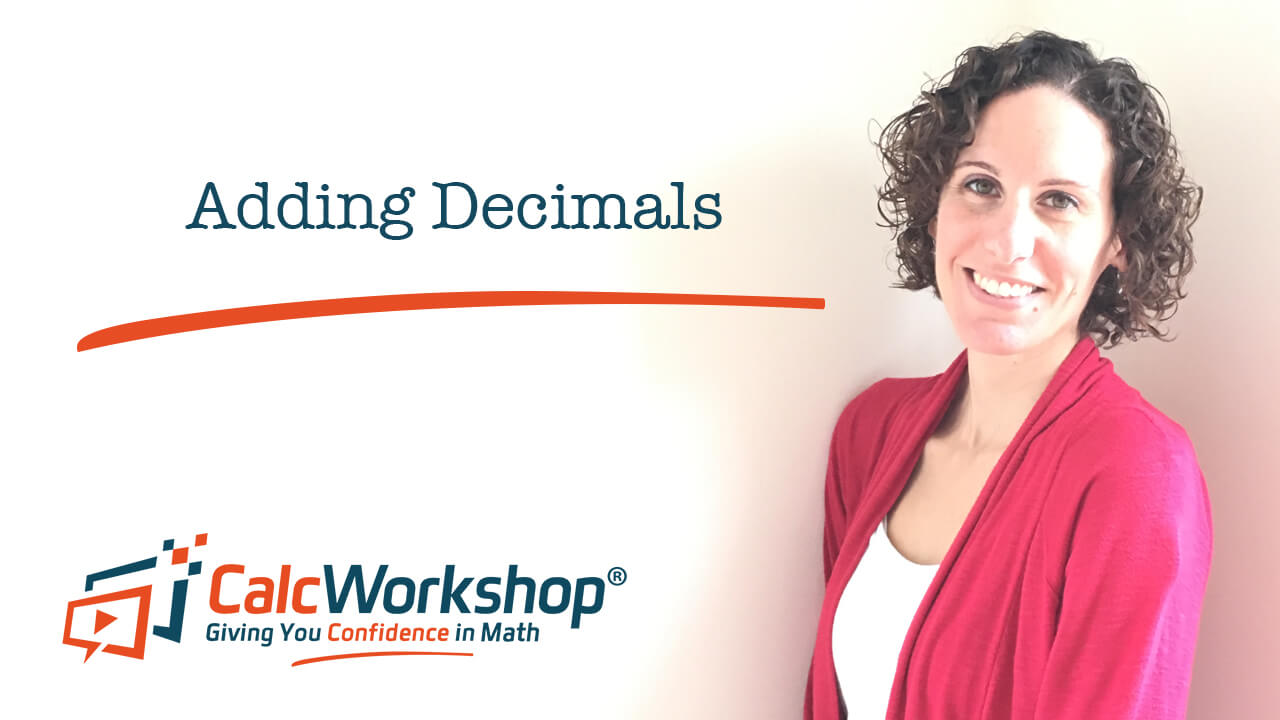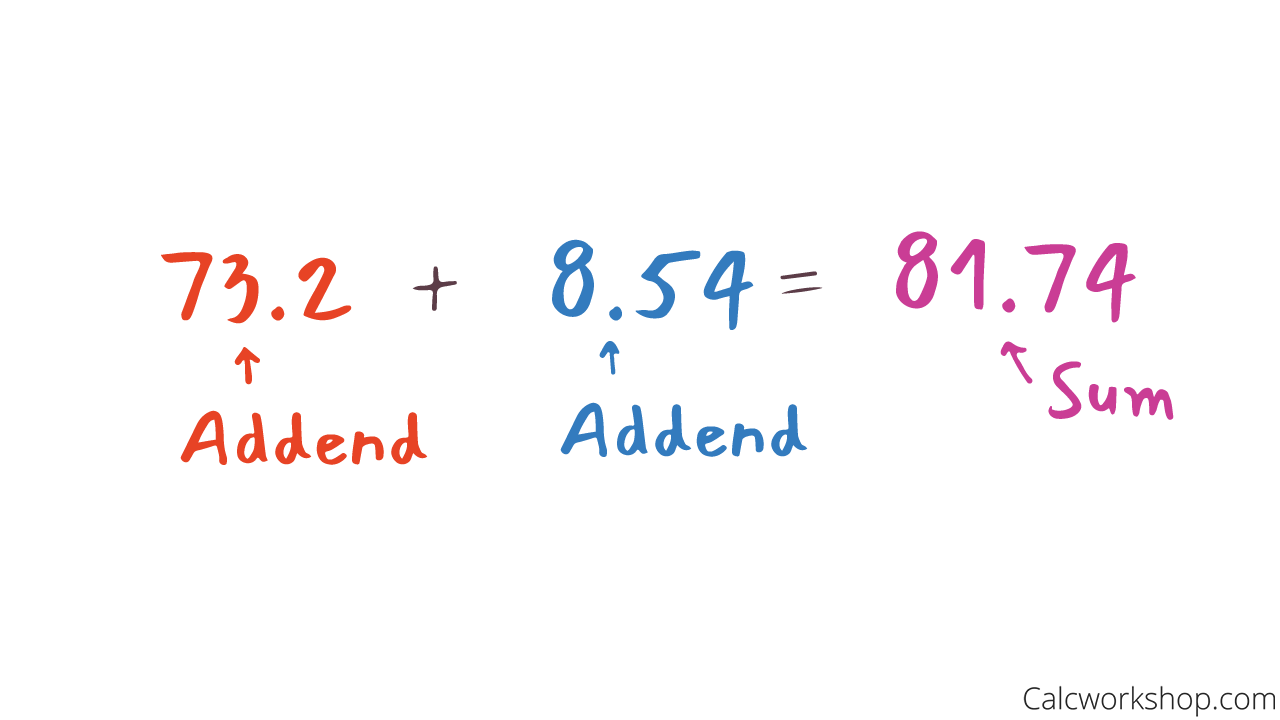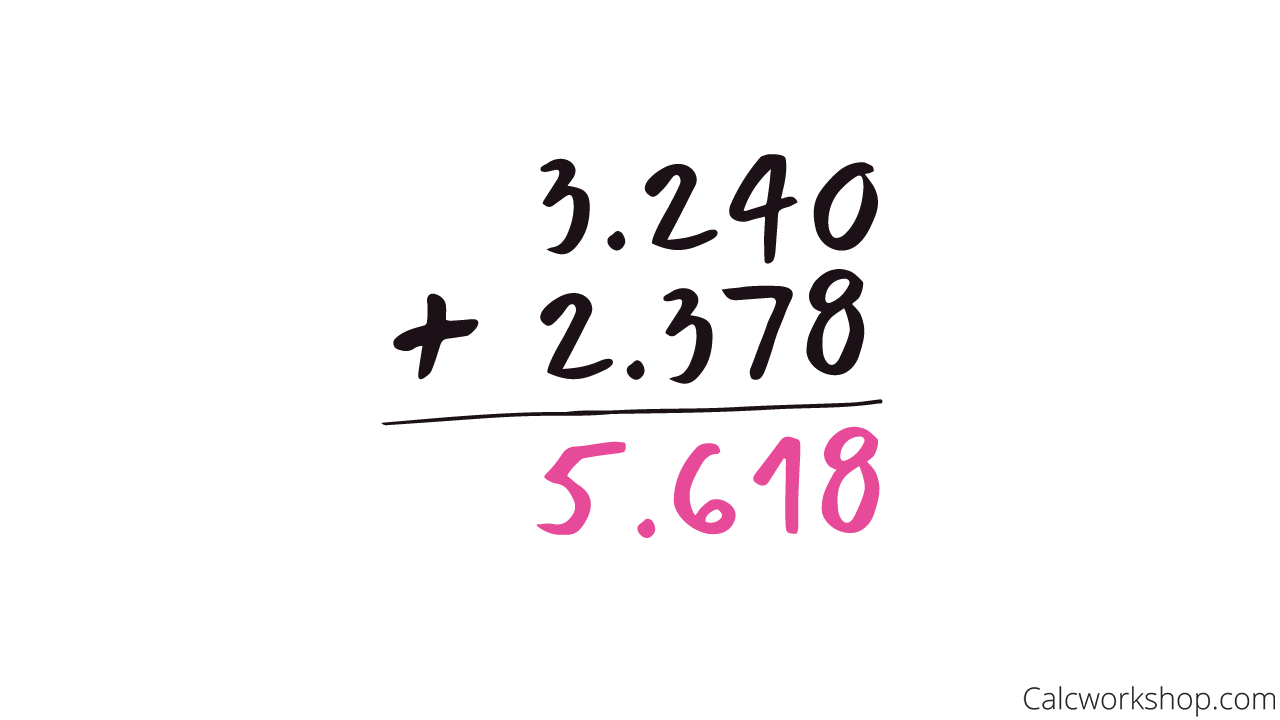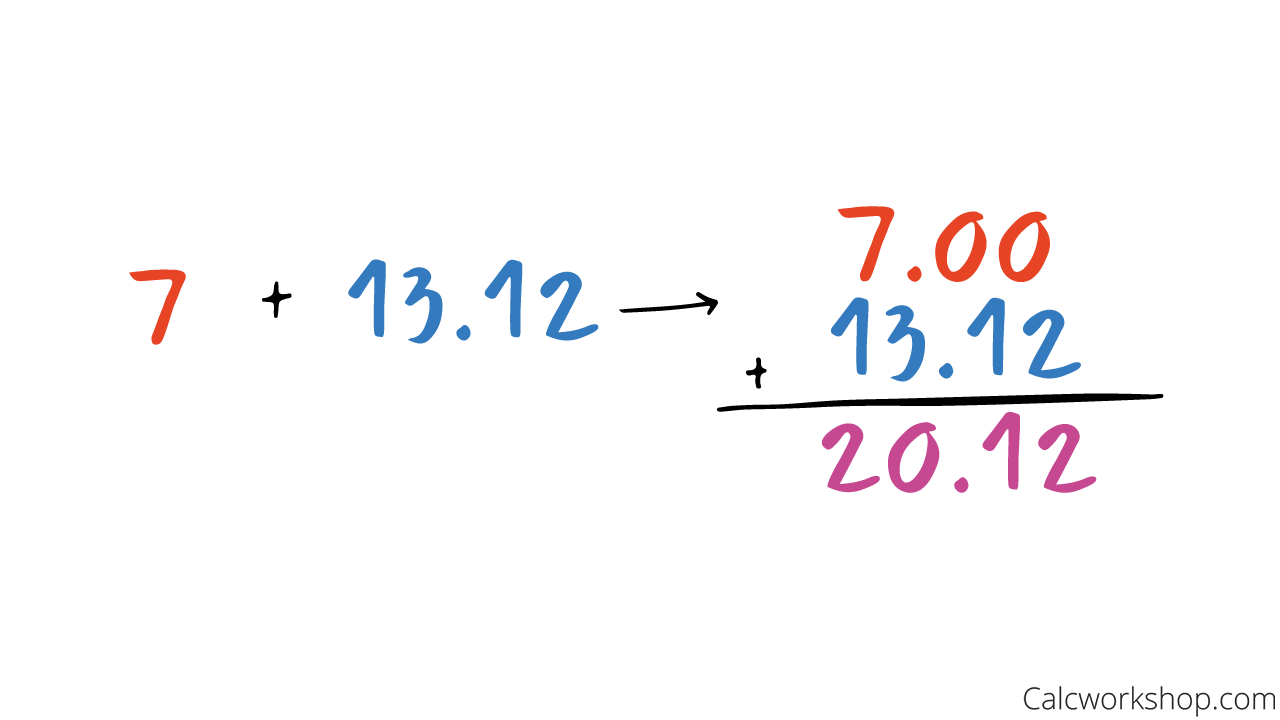How to add decimals?

Jenn, Founder Calcworkshop®, 15+ Years Experience (Licensed & Certified Teacher)
Great question!
That’s what this video is all about.
The great thing is that if you can add numbers, then you can add decimals!
Math Vocabulary
But before we look at adding decimals, let’s remind ourselves of some vocabulary.
Whenever we add numbers, decimal or whole number, we have to line up our addends.
The term “addend” is just a number that is being added, and the answer we get is called the sum.

What Is An Addend
Step-by-Step Example (with just 3 simple steps!)

Addends And Sum Example
- Write down the addends, one under the other, and place the decimal points one on top of the other (line them up).
- If necessary, put in zeros as placeholders so that the addends (the numbers that are being added together) have the same number of digits after the decimal point.
- Add each column using column addition, and don’t forget to bring the decimal point straight down.

How To Line Up Decimal Points

Zero As A Placeholder

Decimal Column Addition
That’s it!
Line up the decimal points, put in placeholders (zeros) if necessary, then add!
The decimal point never moves and goes straight down to the answer as clearly defined by Lake Tahoe Community College.
4th & 5th Grade Decimals
Now what you will notice, as you progress through math grades, is that each grade digs a little deeper into the topic of decimal addition. So in fourth and fifth grade, you will be adding either two, one-digit or two, two-digit decimal numbers.

Adding With One Decimal Place

2 Decimal Places Example
7th & 8th Grade Decimals
Whereas, in sixth and seventh grade, you will be adding three or four, multi-digit decimal values as well as decimals and whole numbers.

Addition Of Multi-Digit Decimals

Adding 3 Decimals
But as you will quickly see in the video below, it really doesn’t matter how many numbers or how many decimal places there are, because the technique is always the same.
So regardless of what grade you’re in, adding decimals is just three easy steps!
But there’s more!
Commutative Property of Addition
Did you know that addition is commutative?
Huh?
Commutative simply means that we can switch the order and get the same answer.
For example — 2 + 5 is the same thing as 5 + 2, as both will give you the value of 7.
So, if addition is commutative, then adding decimals is also commutative, as the example below, where we add a decimal and a whole number, demonstrates.

How To Add With Decimal And A Whole Number

Decimal Plus A Whole Number Example
Addition Words — The Keys to Word Problems
And we’ll even take a look at some keywords or phrases that tell us we need to “add,” like:
- Sum
- More Than
- Plus
- Total
- etc.
Why?
Because later on, we will look at word problems involving operations with decimals, it’s important to start recognizing these keywords so that unraveling word problems won’t be so intimidating later.
Worksheet (PDF) — Hands on Practice
One of the best ways to learn the material is to put a pencil to paper. And that’s where these worksheets come in to play.
Practice Problems
Step-by-Step Solutions
This video lesson will show you everything you need to know about how to add decimals, no matter what grade you are in. And it will get us ready for our next lesson on subtracting decimals!
Let’s get to it!
Lesson & Examples (Video)
27 min
- Introduction to Video: Adding Decimals
- 00:00:57 – How to add decimals? Three Easy Steps!
- 00:04:10 – Find the decimal sum (Examples #1-2)
- 00:08:38 – Find each sum (Examples #3-6)
- 00:19:56 – What are the keywords that tell us to “add”?
- 00:21:45 – Understanding why addition is commutative
- Practice Problems with Step-by-Step Solutions
- Chapter Tests with Video Solutions
Get access to all the courses and over 450 HD videos with your subscription
Monthly and Yearly Plans Available
Still wondering if CalcWorkshop is right for you?
Take a Tour and find out how a membership can take the struggle out of learning math.